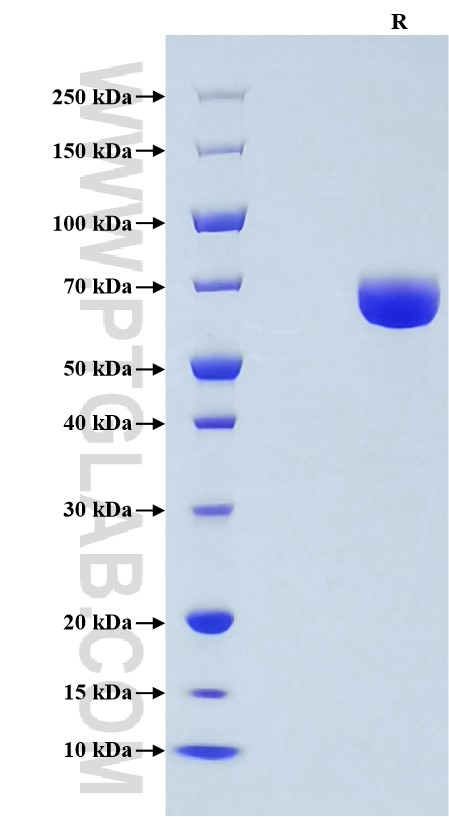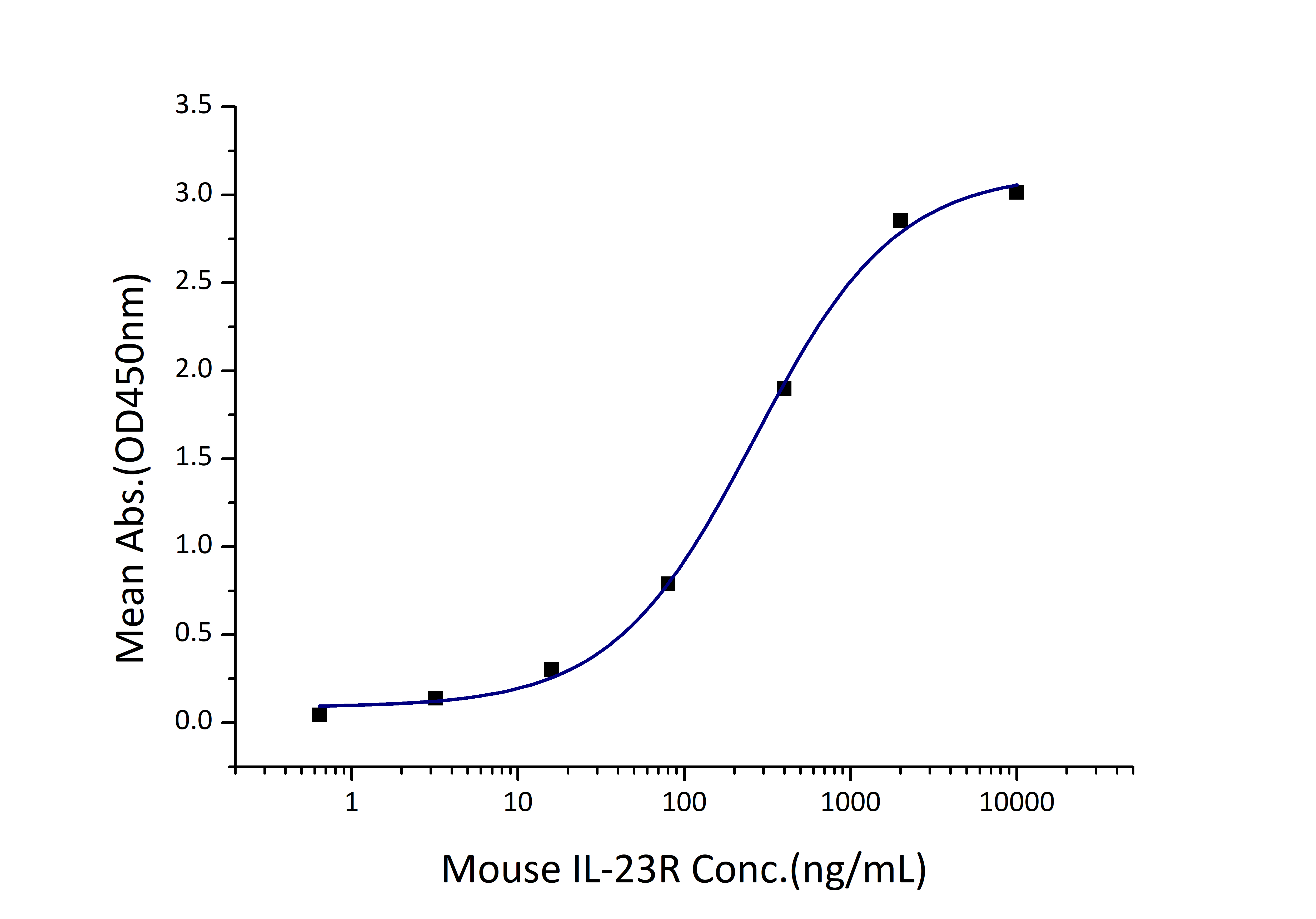Recombinant Mouse IL-23 protein (His Tag)
种属
Mouse
纯度
>95 %, SDS-PAGE
标签
His Tag
生物活性
EC50: 130-520 ng/mL
验证数据展示
产品信息
| 纯度 | >95 %, SDS-PAGE |
| 内毒素 | <0.1 EU/μg protein, LAL method |
| 生物活性 |
Immobilized Mouse IL-23 (His tag) at 0.5 μg/mL (100 μL/well) can bind Mouse IL-23R (hFc tag) with a linear range of 130-520 ng/mL. |
| 来源 | HEK293-derived Mouse IL-23 protein Met23-Ser335 (Mouse IL-12B Accession# P43432)+linker+Leu20-Ala196(Mouse IL-23A Accession# Q9EQ14) with His tag at the C-terminus. |
| 基因ID | |
| 蛋白编号 | P43432(IL-12B) & Q9EQ14(IL-23A) |
| 预测分子量 | 58.1 kDa |
| SDS-PAGE | 60-70 kDa, reducing (R) conditions |
| 组分 | Lyophilized from 0.22 μm filtered solution in PBS, pH 7.4. Normally 5% trehalose and 5% mannitol are added as protectants before lyophilization. |
| 复溶 | Briefly centrifuge the tube before opening. Reconstitute at 0.1-0.5 mg/mL in sterile water. |
| 储存条件 |
It is recommended that the protein be aliquoted for optimal storage. Avoid repeated freeze-thaw cycles.
|
| 运输条件 | The product is shipped at ambient temperature. Upon receipt, store it immediately at the recommended temperature. |
背景信息
Interleukin 23 (IL-23) is a member of the IL-12 cytokine family and composed of two subunits, IL-12p40 and IL-23p19. It is produced by antigen presenting cells and has been shown to promote the production and survival of a distinct lineage of T cells called Th17 cells. A functional receptor for IL-23 (the IL-23 receptor) has been identified and is composed of IL-12Rβ1 and IL-23R. IL-23 is expressed chiefly by the macrophages and DCs. The IL-23R is found on memory T cells, NKT cells, macrophages, DCs, and naive T cells upon activation by TGF-β and IL-6. The main biological effects of IL-23 identified initially consist of stimulation of antigen presentation by DCs, T cell differentiation to Th17 cells, and production of interferon-γ (IFN-γ). IL-23 acts also as an end-stage effector cytokine through direct action on macrophages.
参考文献:
1. Kleinschek MA. et al. (2006). J Immunol. 176:1098-106. 2. Langrish CL. et al. (2005). J Exp Med. 201:233-40. 3. Parham C. et al. (2002). Journal of Immunology. 168 (11):5699-708. 4. Cua DJ. et al. (2003). Nature.421:744-8.

